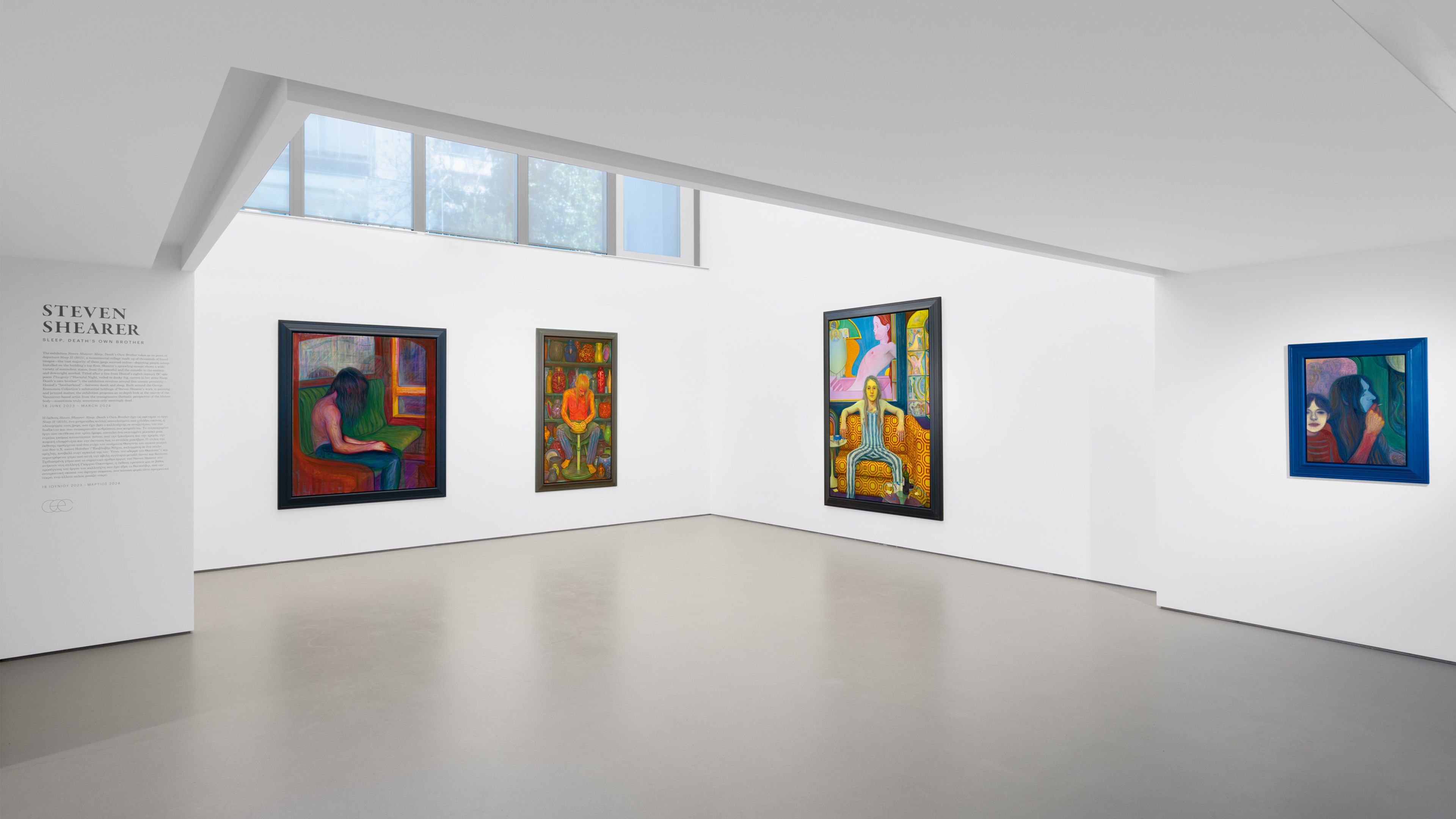The George Economou Collection, Athens
June 2023
The exhibition Steven Shearer: Sleep, Death’s Own Brother takes as its point of departure Sleep II (2015), a monumental collage made up of thousands of found images—all of them JPEGs sourced online—depicting people asleep. A breathtaking tour de force balancing color, scale, structure, and subject matter, the sprawling mosaic shows a wide variety of somnolent states, from the peaceful and the comedic to the ecstatic and downright morbid. Titled after a line from Hesiod’s eighth-century BC epic poem Theogony (“Harmful Night, veiled in dusky fog, carries in her arms Sleep, Death’s own brother”), the exhibition revolves around this uneasy proximity (“brotherhood”) between death and sleep, a recurring trope in Shearer’s art. Built around the George Economou Collection’s substantial holdings of Steven Shearer’s work in painting and printed matter, Sleep, Death’s Own Brother proposes an in-depth look at the oeuvre of this Vancouver-based artist from the transgressive thematic perspective of the lifeless body, which is sometimes truly, sometimes only seemingly dead. Shearer first gained renown in the early 2000s with a range of works rooted in his deeply personal affinity with seventies teen culture and the proletarian aesthetic of the global metal underground, which the artist continues to mine for iconographic references, however serendipitous, to canonical art history. One of the earliest works in the exhibition, Man Sitting (2006), is exemplary of his transhistorical strategy of image-making: while the source for the painting is a grainy black-and-white photograph of a long-haired shirtless drummer behind his kit, Shearer transforms the image into a hieratic portrait of a brooding youth sitting inside a claustrophobic interior, with delirious echoes of the world of Edvard Munch. (This same Munchian gloom informs the portrait The Sickly Fauve (2014).) Shearer’s frequent references to the gothic sensibility of late medieval Old Master painting and visual culture reflect the morbid preoccupations of his subject matter; like the ballpoint drawing Band (2004), based on an infamous group portrait of—nomen est omen—death metal pioneers Obituary, hanging from nooses. Band appears in the exhibition beside another macabre masterpiece from the George Economou Collection, Rudolf Schlichter’s watercolor drawing The Artist with Two Hanged Women (1924), while similarly lugubrious works by Schlichter’s contemporary Otto Dix provide further historical backstory. Death, of course, is one of art history’s truly immortal concerns. Learn more at The George Economou Collection.




